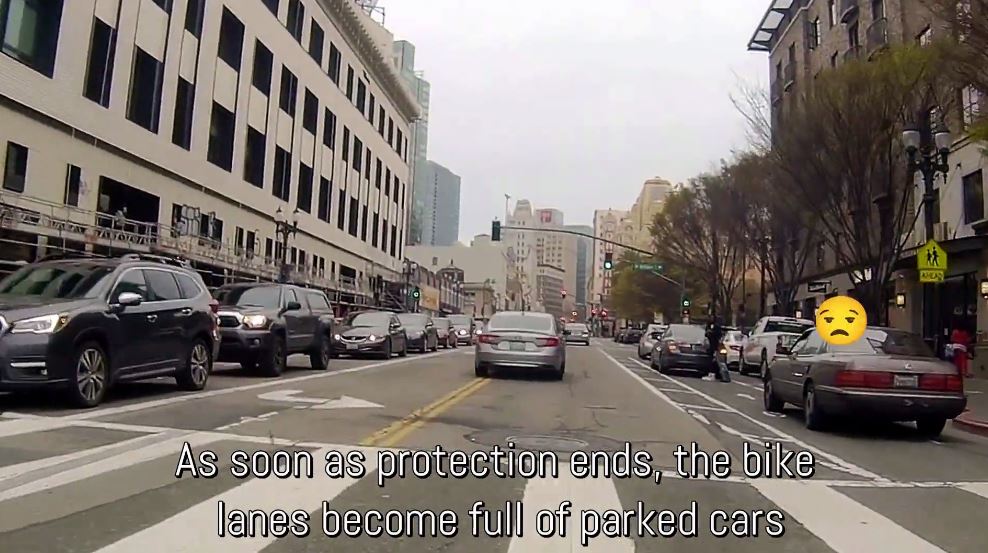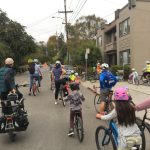I rode my bike down the protected bicycle lane on Telegraph Avenue in downtown Oakland the other day. It was not as pleasant as I'd hoped, but still way better than what it was like riding a bicycle on Telegraph Avenue before the lanes were installed. Back then, it felt like riding next to cars on a highway, with some obstacles in between. Traffic speeds are slower now, but there are still a lot of obstacles.
Most of the obstacles were at driveways and intersections, and were mostly drivers who were trying to drive their cars somewhere. When the bike lanes ended downtown though, the painted bike lane became an auxiliary parking lot for cars. This was frustrating, as the parked cars render those bike lanes useless. I guess one could argue that they were already useless to start, since they simply rely on a stripe of paint to prevent people from driving and parking their cars unsafely.
What is a protected bike lane?
Protected bike lanes (sometimes called "separated bike lanes" or "cycletracks") are separated from car traffic with physical barriers, such as curbs, planters, parked cars or bollards. The physical barriers prevent people from driving in them. The physical barriers also make the streets calmer, as fast moving cars that are nearby often make people on bikes feel uncomfortable. (As one would totally expect). One can think of a protected bike lane as a "sidewalk for people on bikes".
Why do protected bike lanes work?
Protected bike lanes have been found to increase safety for all road users, including drivers and pedestrians and people on bikes. A study by the University of Colorado Denver examined data from 12 large cities in the USA, including San Francisco, Portland, and Denver. Researchers had assumed that a "safety-in-numbers" concept held, where more people on bikes would improve safety for all other people on bikes. They were surprised to find that infrastructure, specifically protected bike lanes drive reductions in traffic violence fatalities.
The reason is that the bike lanes reduce the speed of cars in cities. And as one can expect, higher traffic speeds lead to worse outcome for any part involved in the collision. With 40,000 people dying on America's roads every year (about the same number of Americans who die from gun violence), protected bike lanes can help keep more people alive, regardless of how they travel.
They also can reduce greenhouse gas emissions by making it more comfortable for people to ride their bikes for short city trips instead of driving.
What happened to the Telegraph Avenue bike lane in the video?
The protected bike lane in Oakland is incomplete, and ends around 19th street. As soon as it ends, the car parking begins. The lane is not usable because there are so many cars parked in it.
Protected bike lanes don't only protect people on bikes from drivers actively moving their cars. They also prevent drivers from parking in the bike lane.
I rode down a protected lane the other day. As soon as the protection ends, the car parking begins. Without physical barriers, unfortunately, some people will put their car wherever they can drive it.





